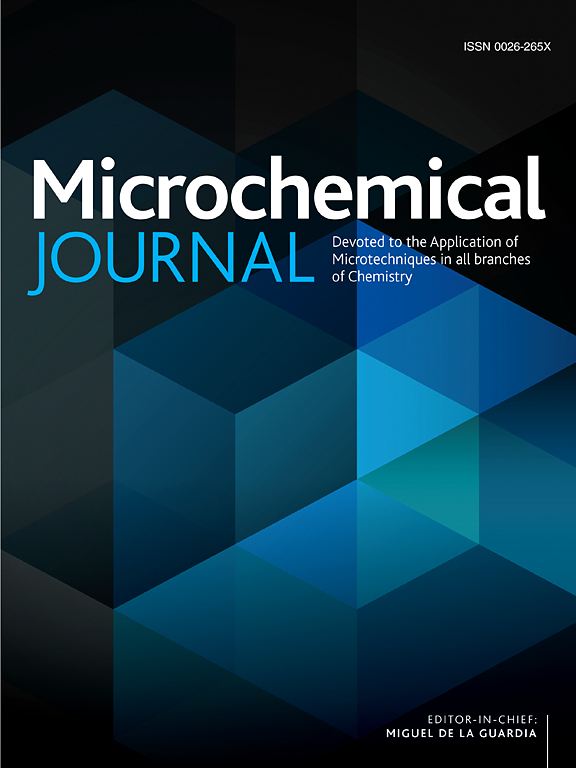Illuminating the analytical chemistry Profile: A Three-Decade comprehensive review of fluorometric quantitation in pharmaceutical formulations
IF 4.9
2区 化学
Q1 CHEMISTRY, ANALYTICAL
引用次数: 0
Abstract
Owing to its high sensitivity and specificity, fluorescence spectroscopy has emerged as a critical analytical tool for pharmaceutical formulations. Over the last three decades, it has been widely used to quantify active pharmaceutical ingredients across various drug formulations owing to its ability to detect trace amounts, even in complex matrices. This review synthesizes the applications of fluorescence spectroscopy in pharmaceutical formulations from 1990 to the present, focusing on advancements in methods, solvents, wavelengths, linearity, and sensitivity metrics, such as LODs and LOQs. The data was compiled from studies involving spectrofluorometric methods for pharmaceutical formulations. The key parameters included the excitation and emission wavelengths, solvents, linearity ranges, LODs, and LOQs, with a comprehensive analysis of the trends and developments in these metrics over time. This review highlights substantial variations in excitation (220–419 nm) and emission wavelengths (292–800 nm), reflecting the diverse chemical structures of the drugs analyzed. Water and methanol are the most commonly used solvents for this purpose. Linearity ranges extended from 0.05--600 ng/mL (e.g., amulpride to etodolac), demonstrating the versatility of fluorescence spectroscopy. The LOD values ranged from 0.007 µg/mL (methocarbamol) to 60 ng/mL (fluvoxamine), indicating high sensitivity. Fluorescence spectroscopy remains an indispensable tool for pharmaceutical quantitation, offering enhanced precision and adaptability to a wide range of drug formulations. Its evolution, characterized by increased sensitivity and methodological refinement, ensures its continued relevance in drug quality assurance and regulatory compliance.

求助全文
约1分钟内获得全文
求助全文
来源期刊

Microchemical Journal
化学-分析化学
CiteScore
8.70
自引率
8.30%
发文量
1131
审稿时长
1.9 months
期刊介绍:
The Microchemical Journal is a peer reviewed journal devoted to all aspects and phases of analytical chemistry and chemical analysis. The Microchemical Journal publishes articles which are at the forefront of modern analytical chemistry and cover innovations in the techniques to the finest possible limits. This includes fundamental aspects, instrumentation, new developments, innovative and novel methods and applications including environmental and clinical field.
Traditional classical analytical methods such as spectrophotometry and titrimetry as well as established instrumentation methods such as flame and graphite furnace atomic absorption spectrometry, gas chromatography, and modified glassy or carbon electrode electrochemical methods will be considered, provided they show significant improvements and novelty compared to the established methods.
 求助内容:
求助内容: 应助结果提醒方式:
应助结果提醒方式:


